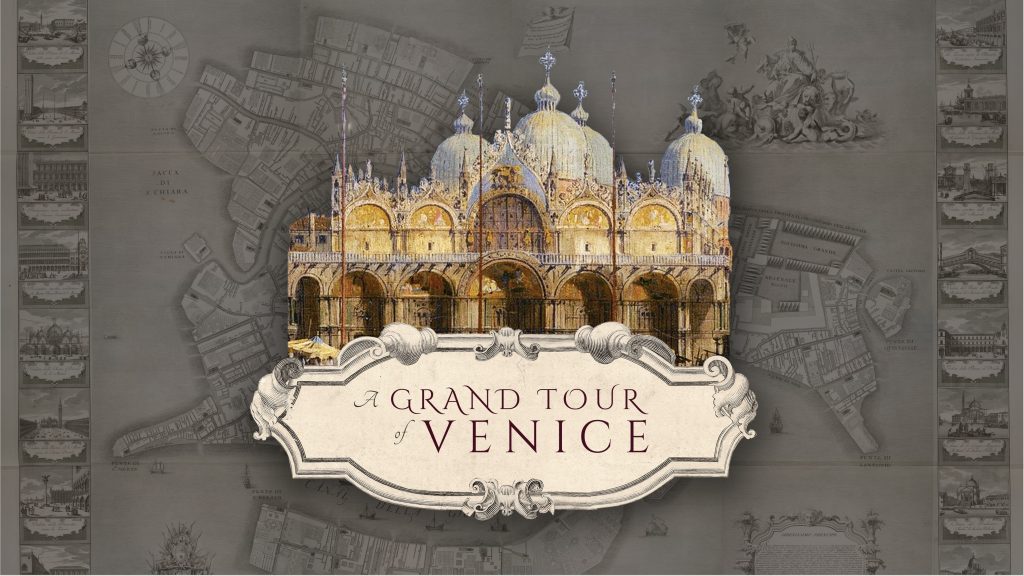
This comprehensive display is both innovative and informative. Visitors explore eighteenth-century Venice through several themes: The European Grand Tour; Carnival and Spectacle: Processions, Fairs, Games, Outdoor Parties, Theater; Souvenirs: View Painting and Portraits; Collecting: Consul Joseph Smith’s Collection of Books, Gems and Art; and Copying: Forgery or Flattery?
A hallmark experience for young British noblemen was the Grand Tour, a great escapade across Europe’s most renowned cities to study art and culture. Venice was a sought-after location for a variety of reasons. In particular, the city’s aesthetic mystique and its intriguing contrast of professed piety and performed promiscuity during Carnival meant that tourists could enjoy any number of pleasures in the guise of a religious celebration. Tourists would purchase imagery as souvenirs, including paintings and pastels. Maps of Venice would also serve as mementos. The Ughi Map printed on multiple sheets was purchased from shops where the sheets were bound into a portable album format. The pages could be cut out and reassembled upon arrival back home: the ultimate Grand Tour souvenir.
Exhibition-goers interact with Duke’s second-state edition of Ludovico Ughi’s map along with a selection of rare books printed in Venice, seen in glass cases and on touch screens. These texts—incunabula (ca. 1460-1501) as well as Venetian volumes printed during the 16th to 18th centuries—are presently housed in the Rubenstein Rare Book and Manuscript Library at Duke University. Certain innovative printmakers, such as Aldo Manuzio, were constantly infuriated by the sneakiness of others who would steal their work and publish it before them. Even the imagery around the periphery of the Ughi Map (left, bottom) replicates, almost identically, famous engravings by Carlevarijs (right, bottom), already published and circulating at the time of the map’s production. Should such appropriation be considered forgery or flattery?






